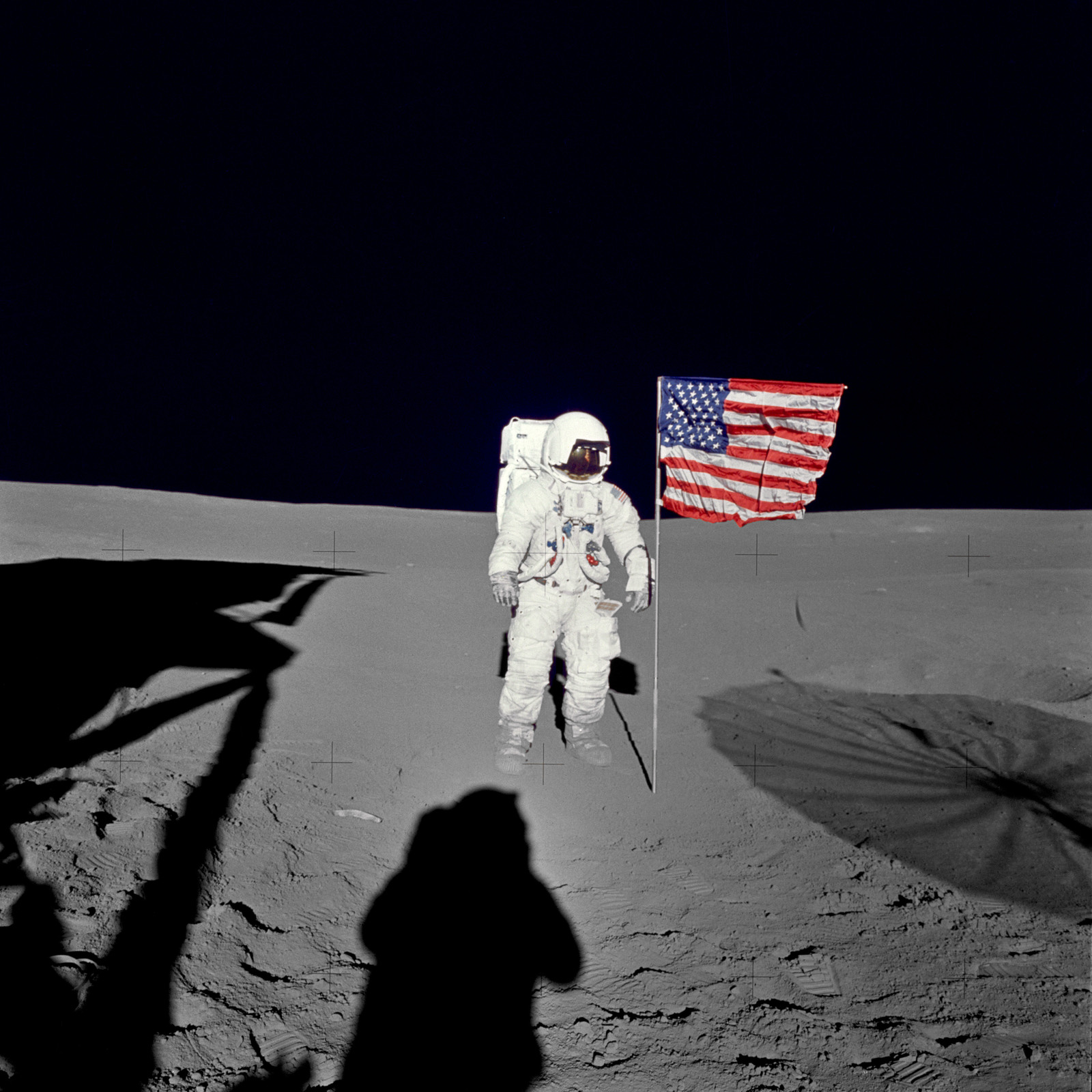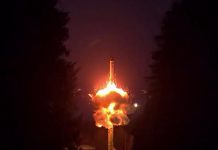Humanity made unimaginable strides in space exploration starting the 1960s when the Cold War was at its peak. The fierce competition for global dominance between the United States and the Soviet Union ushered in tremendous scientific advancements; the technology that evolved changed the world forever.
US Navy’s ‘Top Aggressor Squadron’ To Get Massive Boost With The Induction Of F-18 Super Hornets
The space race between the two world powers began in the 1950s, as they strenuously worked to develop weapons of mass destruction, and with that, the Intercontinental Ballistic Missile (ICBM).
The ICBMs require powerful rockets to launch them to the Earth’s upper atmosphere, and fortunately, the rocket technology is fundamental to space exploration, which, therefore, led to an early advancement in space launch capabilities.
The Soviet Union made early successes in the space race, launching the first artificial satellite into Earth’s orbit in 1957, Sputnik 1, and subsequently, putting the first man in orbit in 1961.
Therefore, the legacy of the Cold War is more than just conflict and global tension, in a way, it birthed the modern technological space and military age.
So, why did the Soviets lose the moon race? They had led the Americans in the early days of the race and their lead seemed almost unassailable. The Soviets had many firsts to their credit, including sending the first human in space, performing the first spacewalk, the first soft landing on the moon, and the first lunar rover.
These accomplishments demonstrate the country had incredible technology available and a vast pool of smart people. Despite all that, the Americans managed to get to the moon first and were the only country to have achieved the unique feat.

The hopes of the Soviet Union had dashed when it tried to test-fire its N1 rocket for the second time on July 3, 1969, just 17 days before Neil Armstrong and Buzz Aldrin walked on the lunar surface. The rocket blew into pieces, completely destroying the launch-pad built with years of hard work and exorbitant amounts of money.
The failure was kept a secret by the USSR, with no official announcement about the secret mission ever made. However, in the same year, a US satellite caught glimpses of the Soviet test range in Tyuratam, Kazakhstan, showing utter devastation at one of the two launch pads known to host the moon rocket.
The reasons explaining the failure of the USSR to reach for the moon are many, and there is no single, easy explanation. But there are a few broad factors that help us understand why the country, which had made profound initial strides in space, failed to get to the moon.
First, the Soviets were late entering the moon race, initiating their plans more than three years after the USA’s declaration in May 1961.
The Soviet Chief Designer Sergei Korolev got the permission to develop a series of heavy-lift rockets designated “N” in 1960. These rockets achieved the capacity to lift about 80 tons of payload to Earth’s orbit by 1967. The N-series rockets were to become the backbone of the Russian military and space achievements.
These rockets were built to achieve a variety of military goals, including helping the country launch a large Earth-orbiting space station, and also the human missions to Mars. However, NASA’s 1964 launch of a Saturn-I rocket alarmed the Russians, and the development of a moon rocket designated N-1 was prioritized. Kremlin vowed to beat the Americans to the moon, beginning the immediate development of the rocket by August 1964.
The plans were complicated since the Soviet defense industry at the time seemed beset with a chaotic management system, something one didn’t find in a socialist economy. There was no centralization of the space programs, unlike at NASA, which was a top-down system run by the federal government. The Soviet space program suffered immensely due to the bureaucratic gridlock and the whims of powerful individuals.
What severely impacted the country’s moon ambitions was the internal rivalries between leaders of the Soviet space program—Sergei Korolev, Valentin Glushko and Vladimir Chelomei.
Sergei Korolev, who presided over the country’s largest missile and space firm, fought with Valentin Glushko, whose firm was a pioneer in building high-performance, liquid-propellant rocket engines.
The two battled over the N-1 rocket designs, to the point where they refused to be in the same room together. When in 1962, the Soviet government evaluated Glushko’s designs for the N-1 and those of Nikolai Kuznetsov, who was a newcomer to the rocket engine business and willing to use cryogenics as Korolev wanted, it ruled in favor of Kuznetsov.
The rivalry between the space technologists hindered any progress in Russia’s space program. After failing to get the contract, Glushko reportedly used his powerful friends in the Communist Party and allies in the space program to advance his projects. He partnered with a fellow usurper, Vladimir Chelomei, and in 1967, when Korolev’s N-1 program was moving full-steam ahead, they managed to get approval from the Politburo to start a parallel project, the UR-700, to compete with N-1 rocket.
The incidents like these severely dissipated the badly needed resources in the country, and the lack of discipline along with widespread corporate lobbying destroyed the country’s chance of developing the necessary technologies to get to the lunar surface.
The Soviet space program was also mired in many disputes, which ranged from the use of propellant and design of the future moon rocket to the other strategic disagreements within the industry.
Right from its approval in 1964, the myriad technical problems and flawed flight tests kept widening the gap between Apollo and its Soviet rival. In addition, the USSR also faced geographical disadvantages, since the country’s launch site in Tyuratam was located far from seaports, forcing them to move the assembly of booster stages for the moon rocket to the arid steppes of Kazakhstan—along with an army of workers.
The final nail in the coffin of the Kremlin’s lunar efforts came from the main propulsion system of the N-1 rocket. The lack of adequate machinery and time forced engineers to settle for a much smaller 150-ton engine when the plans were actually to fit the N-1 rocket with engines up to 600 tons of thrust.
Therefore, in order for the launch to be successful, a total of 30 engines would have to be working in perfect synchronization to lift the ultra-heavy vehicle from the Earth’s surface. As it turned out, the vehicle failed in its first launch attempt on February 21, 1969, after one minute and eight seconds in flight due to a propulsion system failure.
The failure did not deter the Soviet scientists, and they proceeded with the second N-1 launch attempt as soon as possible. The second N-1 rocket, designated 5L, blasted off into space on July 3, 1969. The rocket reached an altitude of around 100 meters when some bright pieces ominously fell off from its tail section. The huge structure seemed to have paralyzed in mid-air and started tilting to its side.
The crew of the rocket, which was encapsulated at the front side of the rocket, were saved as the capsule detached from the vehicle after the emergency escape engines were fired. The huge engine explosion rendered the rocket’s flight control systems non-functional, leaving it unable to steer itself downrange, resulting in its crash back onto the launch pad.
The massive explosion destroyed the two-pad launch complex, with some pieces from the rocket found as far as six miles away, and windows of buildings as far as four miles away reported to be blown off.
The failure was the end of the Soviet moon program. The N1 rocket was, however, tested in two more attempts unsuccessfully, forcing the Soviet government to shut down the program in June 1974.




